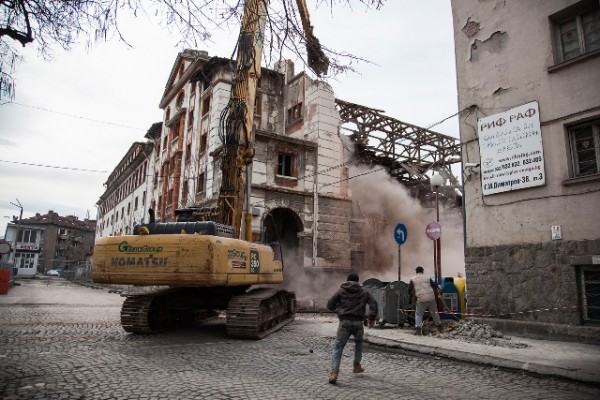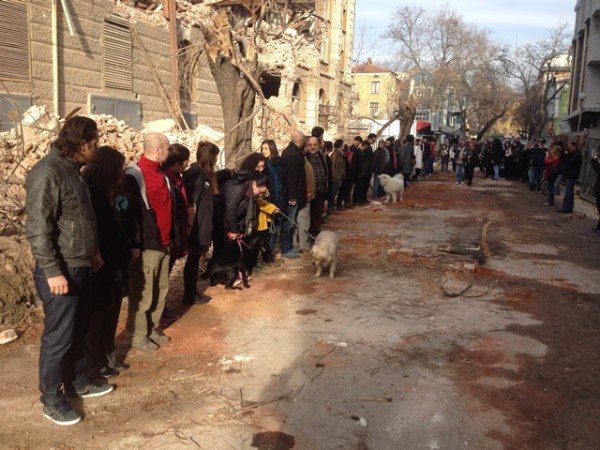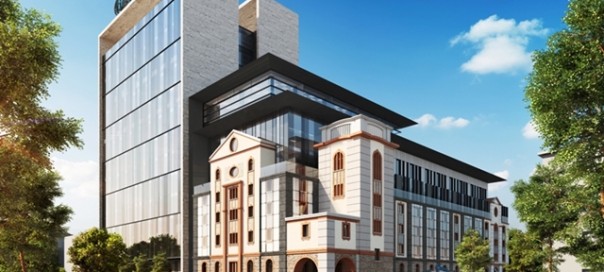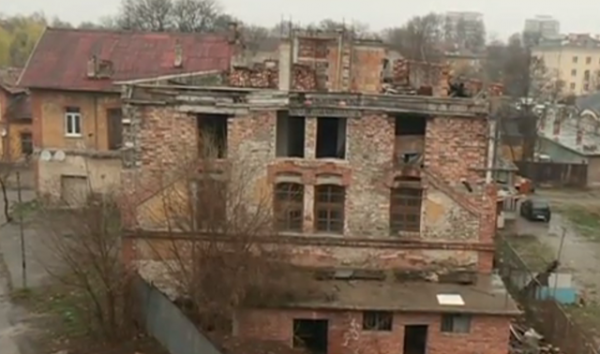The Tobacco Warehouse of Plovdiv- Part of the Cultural Heritage?
Those who been to Bulgaria have probably noticed there is a lot of abandon places, and it’s a paradise for those who are interested in visiting empty houses.
For those who been to Plovdiv its quite possible that you have seen the old Tobacco Factory close to the main city center. It’s a big complex with several buildings that has been empty for a long time, and in the beginning of March a radical change happened. The municipality decided to demolish the old tobacco warehouses. As they started this process they met a strong resistant toward the actions and a big discussion started whatever to destroy the buildings or to restore it as a part historical buildings of Plovdiv. The debate is not over yet and the questions about the tobacco factory as cultural heritage continues.
The History of the Tobacco Factory in Plovdiv
The complex of the tobacco warehouse was built during the 1920-30´s on the street of Edirne 8 in Plovdiv, close to the city center and about a 20 min walk away from the Old Town. Plovdiv came to be the new center of the tobacco industry.
It all started with the Armenian man Magardich Tomasyan (1857-1923) that was a grocery owner in Plovdiv. In 1872 he opened a special compartment for tobacco cutting replaced, and after 15 years he started to co-work with another Armenian man, Kevork Garabedian, and together they created the company Tobacco Workshop Zlaten lev of M. Tomasyan & Co. They worked together till the death of Tomasyan in 1923, when the company got divided into Tomasyan Company by Armenac Tomasyan, the son of Magardish, and Stepan, the cousin of Garabedian, and the other company Zlaten lev by Kirkor and Evant Garabediantook.
The company of Tomasyan was first situated in Kapana (the trap), a place in the old town of Plovdiv, but now came to move their business a bit more outside the city where they started to import machines for cutting the tobacco. This came to be the modern processing of tobacco in Bulgaria and led to a great success. Four years after the tobacco factory started the cigarette of Tomasyan won a golden medal for its quality at the international London exhibition. The company had now grown big and earned a reputation and started to export cigarettes to not just England, but also to Germany, Hungary, Switzerland, Austria and France. In 1934 the factory was provided with new machines and changed the name to Plovdiv Factory.
During the socialism time in Bulgaria it turned bigger and the factory turned to a big complex of 30 buildings. And as Plovdiv grow bigger the factory complex came to end up very central. The company also gained monopoly of the tobacco industry and exported to Germany, Soviet Union and the Eastern Europe. After the changing from socialism to democracy the businesses of the factory complex came to slowly face the end of its glory. The businesses eventually shut down. In the 1990´s some people used some parts of the complex for their own purposes, for example sewing and so on.
Today the complex is since long time empty and falling apart. Its situated on whats called “The Shoe Street” (because of all the shoe stores that you can find on this street). The factory is mentioned in a book and even scenes to a movie has been shot here.
Demolish or Preserve it? The Debate of Plovdiv Tobacco Factory
On the 6th of March a project to demolish the building started. Since its so central with many people living around, one big bus station behind and surrounded by many stores they could not tear the building down at once with an explosion but had to tear it down piece by piece.

This woke up a big debate. Many people in Plovdiv started to demonstrate against the demolishing of the historical building. People gathered around and formed a human change in front of the building in order to prevent more parts to be demolished. Other protesters put stones and woods from the demolished part of the building and put them in front of the City Hall of Plovdiv. The demolishing stopped and the discussion started about conserving or demolishing the complex, and about if it is classed as a cultural monument or not. The Ministry of Culture claims it to be a cultural monument and that the building should be co-ordinated with the National Institute of Immovable Culture Heritage. Prosecutors have opened a pre-trial proceedings in connection with the attempted demolition but are now on hold til they have come to an conclusion of how to handling the future of the factory.

There are reports that tells that the future of the tobacco factory will be a will be remaining of the original facade mixed with new architecture, forming a hotel. Its called “The Hilton-Project”. One of the reasons of debate is that Plovdiv will be Capital of Culture in 2019 and there is a lot of stuff that are being discussed on how to optimize the attractions for tourists. The municipality of Plovdiv works to give the tourists the best visitation. The old tobacco factory has lots of potential as a historical building. Lots of questions have been raised, if not demolishing- what then? What will happen to the old factory? Hotel? Demolishing? Museum? A mall? The discussion continues.

The Start of Discussion about Historical Buildings in Bulgaria
All over the world the discussion is going on on how to deal with our industrial heritage, to save it or demolish it. If we chose to preserve it- how will we do it? Do we have an obligation toward the future generation to save it? How do we take care of our industrial heritage? The debate of the Tobacco Factory in Plovdiv have lead to further discussions when it comes to historical buildings all over Bulgaria. Many historical buildings have been neglected in Bulgaria as a consequence of both socialism and the turbulence that followed after the changing from socialism to democracy. The question on how to handle the industrial heritage in Bulgaria is relative new but there are different initiative to protect historical buildings, for an example “Save Sofia”.
For an example the Sugar Factory Building in Sofia from 1898. The building is very old and a few years ago parts of the building collapsed and caused two peoples death. The owner was fined with 50 000 leva (25 000 euro). Because of the collapse the municipality of Sofia took the owner to the court and fined the owner with an extra 100 000 leva. The Sugar factory is now a subject of a reconstruction project and the commission have been given order that parts of the original facade must be maintained.

Harmali, a town in the south-central parts of Bulgaria, also had an old tobacco factory but was torn down in February 2016 by the owner since it was considered to be a dangerous place. According to Stoilka Ignatova, the chief inspector at the Ministry of Culture, this was an illegal act since the building was a monument of culture. The municipality claims that there was no documents that proved the building was a monument of culture. An investigation led by the Ministry of Culture have now started. Maria Kirkova, the mayor of Harmali, said that the building had been a danger since 2009 when masonry have been falling from the building. She also denies that there are any documents that this was a protected monument of culture. Bulgarian National Television said that both tobacco factory’s in Plovdiv and Harmali was documented as protected building on the list of monuments of culture in 1977.
Plovdiv tobacco factory, Photo: the author
Sources for this article:
http://www.visitplovdiv.com/en/node/634
http://www.studiobogdanovi.com/blog/portfolio-item/tobacco-factory/
http://www.novinite.com/articles/90516/Bulgaria’s+Plovdiv+Demands+Ownership+of+Local+Tobacco+Factory
http://sofiaglobe.com/2016/03/16/new-proposal-for-plovdivs-tobacco-town-building/







It is good to see that Bulgarians not appreciate their cultural heritage in the form of architecture, but are willing to demonstrate strongly to preserve it. This is a wonderful example of people power. Applause, applause! It’s hard to overstate the importance of the tobacco industry in Bulgaria, beginning in the time of the Ottoman Empire and continuing perhaps to today. You don’t have to smoke to recognize that this is a history, culture, architecture worth preserving – though hopefully not as abandoned buildings but as living monuments.
LikeLiked by 1 person
Yeas I agree with you, I really respect the people that are demonstrating, making exhibition and really take this industrial heritage for real. On the other hand, I do understand that its problematic with such old and destroyed buildings since they cost so much money, no matter what you chose to do- demolish or preserve it. Difficult questions! Personal I hope that they manage to find a solution where they can keep the building and at the same time make it useful and attractive. I will follow this discussion with excitement and see where its heading!
LikeLiked by 1 person